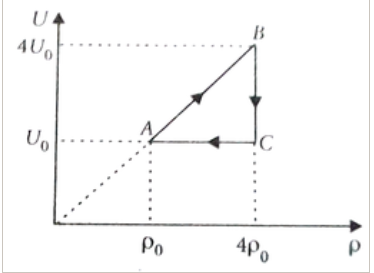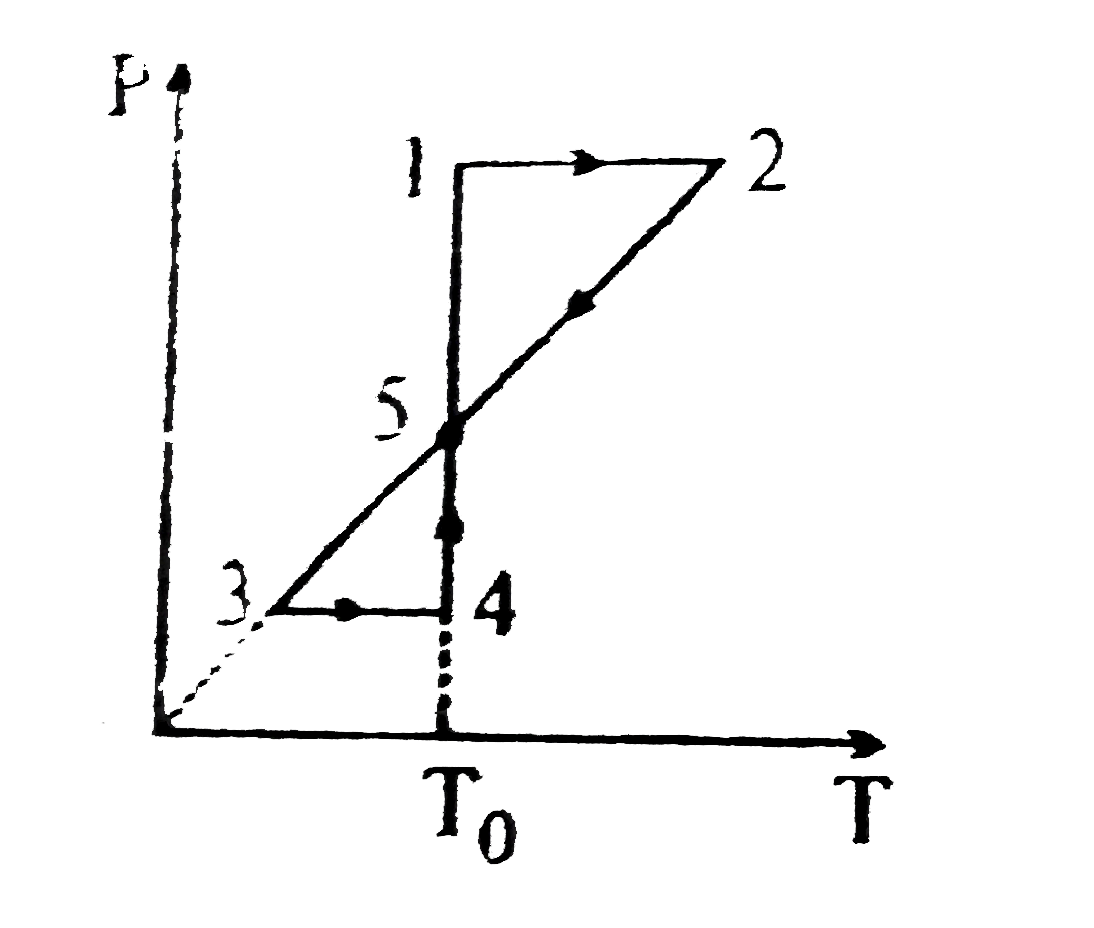Complete Solutions to Higher Order Thinking Skills of chapter THERMODYNAMICS of Class 11 book with complete answers and questions
| Class 11 | PHYSICS |
| Chapter | THERMODYNAMICS |
| NCERT FINGERTIPS | Higher Order Thinking Skills |
| Number Of Questions | 8 |
| Academic Year | 2023-24 |
A thermodynamic process of one mole ideal monoatomic gas is shown in figure. The efficiency of cyclic process `ABCA` will be
View SolutionSome gas `(C_(p)//C_(V)=gamma=1.25)` follows the cycle ABCDA as shown in the figure. The ratio of the energy given out by the gas to its surrounding durning the isochoric section of the cycle to the expansion work done during the isobaric section of the cycle is

View SolutionFor an ideal gas the equation of a process for which the heat capacity of the gas varies with temperatue as `C=(alpha//T(alpha)` is a constant) is given by
View SolutionA monatomic ideal gas is following the cyclic proces ABCA. Then choose the incorrect option.

View SolutionConsider PT graph of cyclic process shown in the figure. Maximum pressure during the cycle is twice the minimum pressure. The heat received by the gas in the process 1-2 is equal to the heat received in the process 3-4. The process is done on one mole of monoatomic gas.

Correct PV diagram for the process is-
View SolutionIn the question number 5, if the maiximum pressure is P then what is the pressur at the point 5? (in P-T diagram)
View SolutionOne mole of a monatomic ideal gas is taken through the cycle shown in figure
 The pressures and temperatures at A,B etc, are denoted by `P_(A),T_(A),P_(B),T_(B)`etc respectively.Given `T_(A)=1000K, P_(B)=(2//3)P_(A) and P_(C)=(1//3)P_(A)` Then choose the incorrect option.
The pressures and temperatures at A,B etc, are denoted by `P_(A),T_(A),P_(B),T_(B)`etc respectively.Given `T_(A)=1000K, P_(B)=(2//3)P_(A) and P_(C)=(1//3)P_(A)` Then choose the incorrect option.
View SolutionA gaseous mixture enclosed in a vessel of volume `V` consists of one gram mole of gas `A` with `gamma = (C_(P))/(C_(V)) = (5)/(3)`an another gas `B` with `gamma = (7)/(5)` at a certain temperature `T`. The gram molecular weights of the gases `A` and `B` are `4` and `32` respectively. The gases `A` and `B` do not react with each other and are assumed to be ideal. The gaseous mixture follows the equation `PV^(19//13)` = constant , in adiabatic process. Find the number of gram moles of the gas `B` in the gaseous mixture.
View Solution
Higher Order Thinking Skills questions and complete solutions for chapter THERMODYNAMICS of NCERT FINGERTIPS PHYSICS (HINGLISH) of Class 11